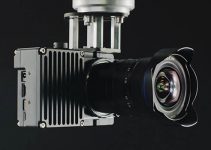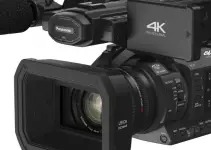When you’re looking for the best of the best camera, there are few who would dispute that an ARRI, RED, or Canon system is going to be the one that fits your needs. These companies didn’t claw their way to the top of the heap, they created the game and they are the envy of everyone else who is trying to get on the board.
Their years of dedication in crafting these systems has given us endless choices for camera bodies, lenses, sensors, color sciences, and everything else you can think of from a slew of companies that are always nipping at their heels. The ARRI ALEXA Mini, the Canon C300 III, and the RED Komodo are cameras that are in high demand right now for one simple reason: they are simply the best of the best.
Justin Philip and his crew of accomplished cinematographers pit these systems against each other to figure out who is the King of the big three! But, as it is will all quick comparisons, there is a chance you might not see a big difference.
Dynamic Range and Highlight Roll Off
Using the Sigma Art 35mm lens on each camera, Justin and the team filmed a subject on a shaded porch with a lot of bright objects and sky in the background. All three of these cameras made short work of this challenged and performed very very well.
From the look of it, the ARRI ALEXA Mini bested the C300 MK III and the Komodo a bit in the highlights, and the roll-off on the skin tones is very nice on the ALEXA as well.
The skin tones of the C300 III look a little washed out and greenish in hue, and the skin tones of the Komodo look rather astonishing. All-in-all none of these images are drastically far off from the other, and I believe they’d cut together flawlessly with the help of the right colorist.
Over Under Test
To see how these cameras fair when shooting underexposed, the team set all of the cameras to one stop underexposed in a shaded area. Again, the ALEXA Mini really seems to outshine over the C300III and the Komodo in the darkness.
Even more surprisingly, at high ISOs of 3200, both the C300 III and the Komodo are starting to look a little washed out compared to the ALEXA Mini, which maintains a beautiful roll off and pretty vibrant skin tones.
High Frame Rates
Both the ALEXA Mini and the C300III are capable of shooting at their full native resolution at 60fps, but this is where the Komodo is at a bit of a disadvantage.
Without cropping the sensor, the Komodo maxes out at 40fps in 6K, so to match the frame rate Justin will have to bump things down to a 4k resolution with a 2X crop.
There really isn’t much to say here either. Both cameras look about as good as they did against each other before, but there is an obvious noticeable crop on the image from the Komodo.
The Komodo is, however, filming in 16-bit raw and both the C300 III and the ALEXA Mini can only shoot in 12bit raw. There are 281 billion colors in a 16bit raw image, and only 68 billion colors in 12 bit – that’s a substantial difference – even though the image is cropped, the Komodo is still recording a lot more data and that color information could be very important in post.
Global Shutter vs Rolling Shutter
This is where the holes in this test really start to show themselves. The C300 III and the ALEXA Mini both how rolling shutter sensors, and the Komodo features a global shutter.
Rolling shutters quickly capture an image by reading the pixels from the sensor from top to bottom – resulting in skewed vertical lines, wobbling images, and light flashes that only light up a portion of the frame. A global shutter sensor, like the one on the Komodo, reads out every pixel at the exact same time yielding a natural-looking image with none of the aforementioned motion artifacts.
The ALEXA Mini and C300 III both have really well controlled, fast-rolling shutter sensors – their rolling shutters are virtually unnoticeable. You may have not really seen anything at all in this test, and that is because Justin and the team aren’t using a long enough lens, panning fast enough, or filming any vertical lines to illustrate this aspect of the ALEXA and C300III.
Testing Flaws
It is great to see these cameras hold up against each other so well, but none of the information we’re seeing from these test shots is helpful at determining which camera has the better image.
At 1:20, Justin describes the color grading settings he is using for all three cameras in the test, ‘a quick primary color grade’, and here in lies the issue we see time and time again. We talked about it just recently with the help of Gerald Undone.
By quickly grading the footage this way, we’re essentially evaluating the log image from each camera with just a little contrast applied to it. Log profiles are designed specifically by their manufacturers and are intended to be used with a transform LUT on the final node of your grade.
The easiest way to quickly / unscientifically compare any camera is to expose to the technical specifications and apply the manufacturer’s LUT for each camera at the final step. To me, the ALEXA looks noticeably better than the other cameras and that is because its LOG profile is the most even, and the Komodo’s and C300III are pivoted differently.
But from what I can see, the ALEXA Mini, C300III, and Komodo all produce sharp, clean, high-resolution images. And, I’m glad these cameras keep getting smaller and smaller.
[source: Justin Philip]
B&H Order Links:
KOMODO 6K Digital Cinema Camera
ARRI ALEXA Mini Body with 4:3 and ARRIRAW
Canon EOS C300 Mark III Digital Cinema Camera Body
Disclaimer: As an Amazon Associate partner and participant in B&H and Adorama Affiliate programmes, we earn a small comission from each purchase made through the affiliate links listed above at no additional cost to you.



